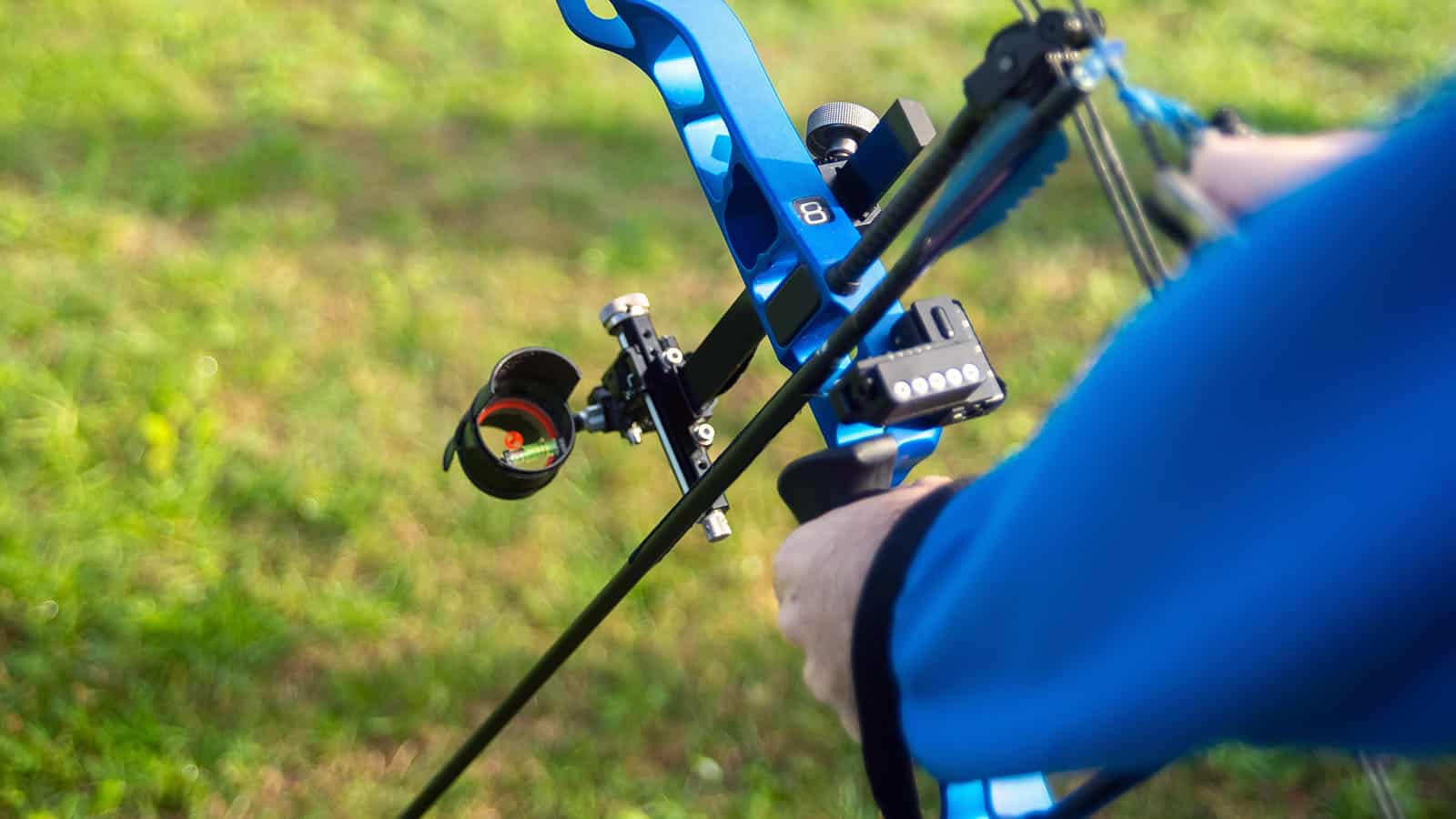Archery is an ancient and fascinating sport that requires precision and skill.
And, to get the best results, it’s essential to understand the various components of an arrow and how they affect the flight and impact of a shot.
Whether you’re a professional archer or a beginner, this information will help you make decisions regarding selecting and using arrows.
So, in this article, we will explore the arrow anatomy, different types of arrows, and how to determine the right arrow’s length.
Typical Arrow Anatomy
Before we answer the question, “What arrows should I shoot?” We will look at the parts of an Arrow, which are the Point, Shaft, Fletch, and Nock. And sometimes, this can include the arrow rest for compound bows. So, with no further ado, let’s explore these parts.

The Point
The point ( known as the tip of an arrow) is a part of arrow anatomy that makes contact with the target. However, the type of point you use depends on your kinds of shooting, such as target shooting or hunting.
For target shooting, field points are not heavy. They have a small diameter, allowing them to easily penetrate paper or foam targets without causing excessive damage.
While for hunting, you use broadheads. These are designed to deliver maximum damage to the target and a clean kill. Also, they are typically heavier and have larger cutting surfaces than field points.
However, using the wrong point type can result in poor performance, decreased accuracy, and even injury, so it’s best to know which to use.
The Shaft
The shaft of an arrow is the main body and the longest part of the arrow. It is typically made of wood, carbon, aluminum, or a combination of materials.
Also, the shaft determines the arrow’s spine, which in turn affects the arrow’s trajectory and stability in flight.
Furthermore, the arrow’s spine measures the shaft’s deflection under a given weight.
A stiffer shaft will have a higher spine, while a more flexible one will have a lower spine.
The Fletch
Fletching is attached feathers or vanes on an arrow’s shaft to stabilize and improve its accuracy in flight. It lifts the arrow and helps it maintain a straight trajectory as it travels through the air.
Typically, the fletchings of an arrow are three vanes of equal length and have equal spacing around the shaft. These vanes are attached at an angle to the shaft, with one vane pointing directly away from the bow and the other two vanes pointing towards the bow.
Also, you can adjust the length and stiffness of the vanes to get flight characteristics.
Furthermore, there are several types of vanes and feathers for fletching, including plastic ones, feathers, and hybrid ones. But the choice of fletching material depends on personal preference and the type of bow and arrow used.
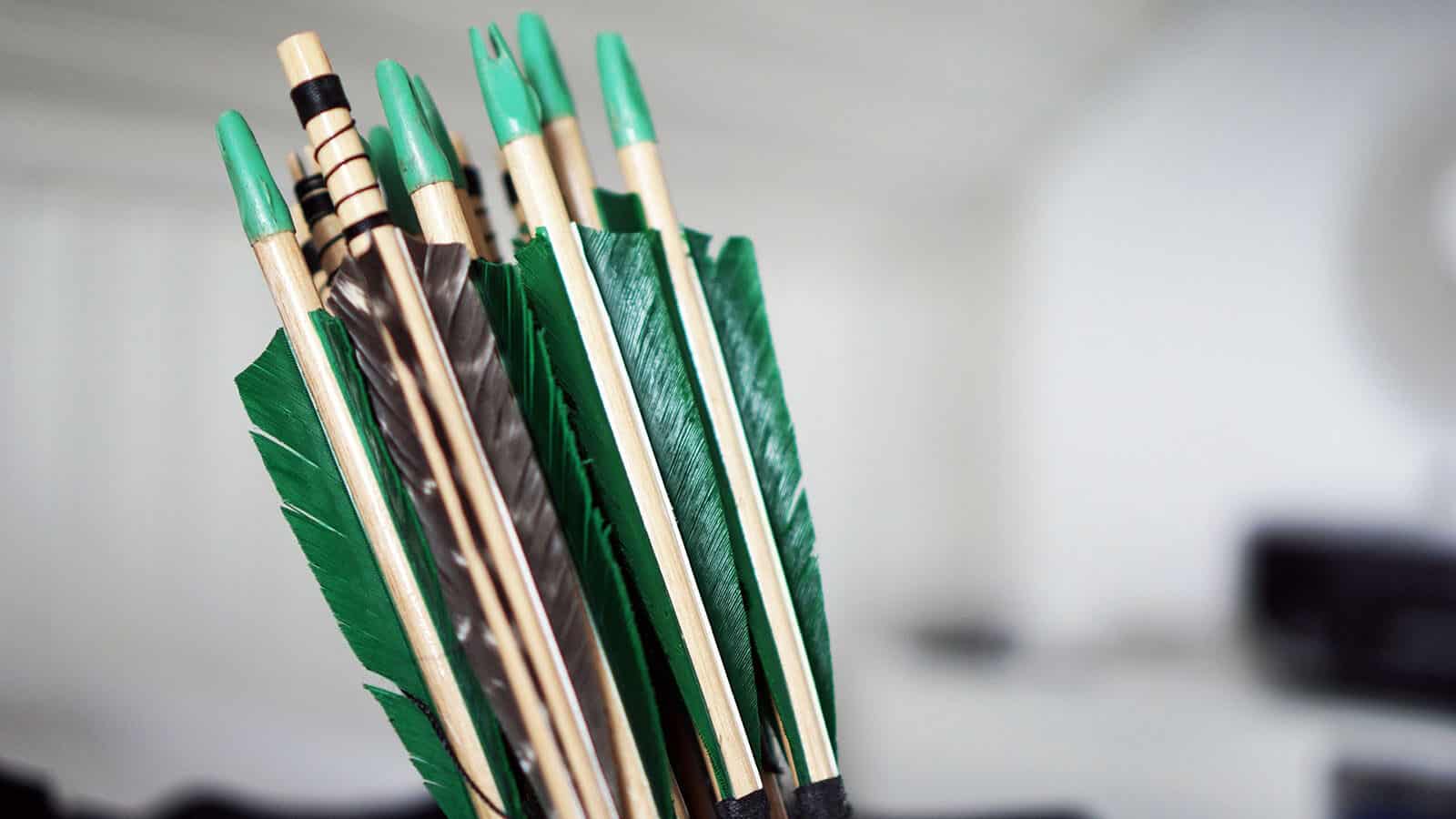
The Nocks
The final on this list are the nocks, which are small notches or grooves located at the back of the arrow and fit on the bowstring.
The nock holds the arrow in place and is a critical component in the operation of a bow.
Additionally, nocks come in various shapes and sizes, depending on the bow used. For example, traditional longbows use a “U” shaped nock, while more modern compound bows may use a “V” or “S” shaped nock.
They are typically made of plastic or other lightweight materials and are durable and resistant to wear and tear.
However, some nocks also have additional features, like a nock-locking mechanism or an adjustable nock, to help improve accuracy and performance.
Arrow Rest
This is usually a horn or metal shoulder on certain bows to support the arrow. It helps with accuracy. And specifically for compound bows, this is an integral part. So, be careful to choose the best arrow rest, as there are bad ones.
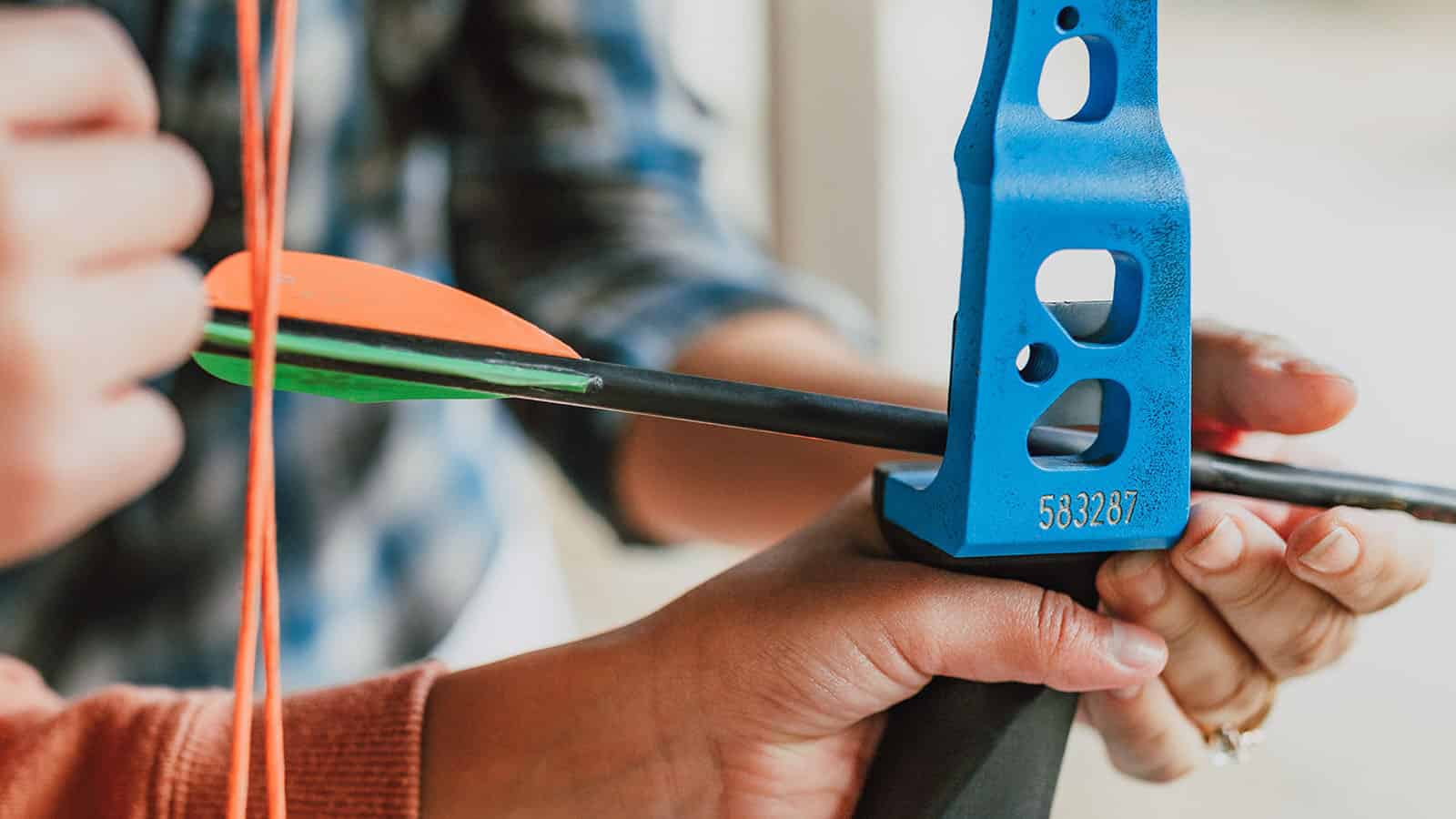
What To Consider When Choosing An Arrow
When buying an arrow, you must consider the spine, weight, material, and length. Thoughtful, right? Below is more on what to consider when choosing an arrow.
- Material: Wooden arrows are traditional, affordable, and have good shooting characteristics, while carbon arrows are more durable and have a higher speed. On the other hand, aluminum arrows are durable but less popular than carbon arrows due to their heavy weight.
- Diameter: The diameter of an arrow is a crucial consideration when buying one, and arrows are available in various sizes. Target archers typically choose arrows with a larger diameter. In contrast, outdoor archers, or those who shoot targets or hunt outdoors, typically use thinner arrows.
- Straightness: The straightness of an arrow is measured in thousandths of an inch. For a longbow, the arrow straightness should be within +/- 0.0025 inches for the best accuracy and consistency.
- Fletchings: A typical configuration for fletching is three vanes or feathers placed at 120-degree intervals. This configuration provides the best balance between stability and speed, allowing the arrow to fly straight and true to its target.
- Draw length: The arrow’s length depends on the archer’s draw length. The draw length is the distance from the nocking point on the bowstring to the pivot point on the bow handle. Draw lengths are essential because too short or too long arrows can result in poor arrow flight, accuracy problems, and even injury.
- Spine: The spine refers to the stiffness or flexibility of an arrow and is a crucial factor in determining its performance in flight. Consult a professional archery retailer or coach to determine the proper spine for your bow and shooting style.
- Spine weight: The arrow’s spine should match the bow’s draw weight. A mismatched spine weight can result in arrow flex and inaccuracies in a shooting.
- Draw weight: A heavy arrow will have more kinetic energy, which can result in deeper penetration and better accuracy. On the other hand, a lighter arrow will have a flatter trajectory and faster speed, making it easier to adjust for wind. Also, you can measure this speed with an arrow speed calculator.
- Weight tolerance: A consistent arrow weight is essential for accuracy. The weight tolerance should be +/- 2 grains for a longbow.
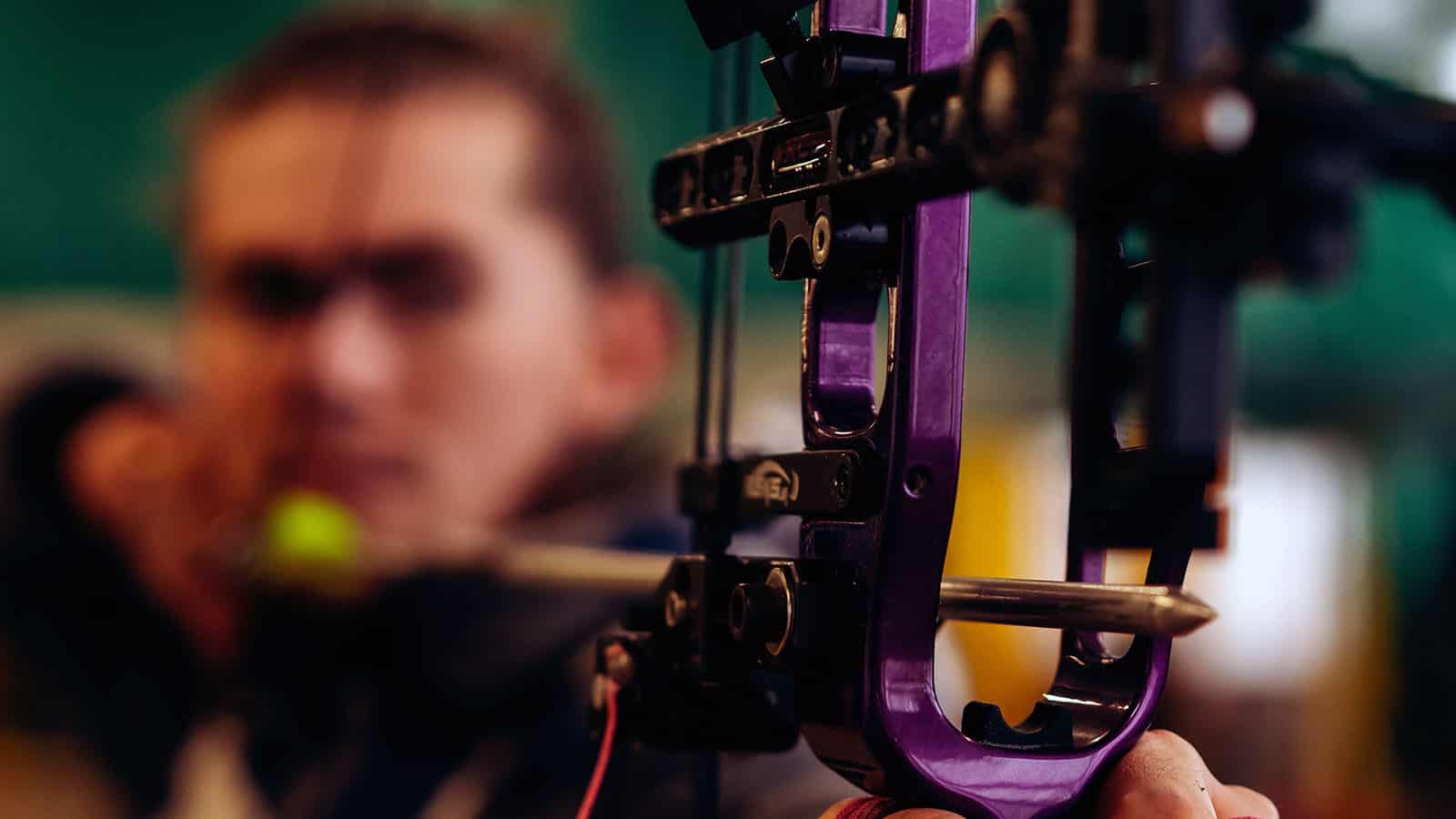
Type of Arrows
To start with, we’ve put together a list of the different arrow types for both beginners and old-time users.
- Wood Arrows
- Aluminum Arrows
- Carbon Arrows
- Composite Arrows
- Fiberglass Arrows
These are explained in detail below.
Wood
Wood arrows are made from various types of wood, such as cedar or pine, and are the most traditional type of arrow used in archery. They are also the most affordable option, making them an excellent choice for beginners or those on a budget.
These arrows are typically used for target shooting and traditional archery and can provide good accuracy and stability. However, they are more susceptible to damage than other types of arrows, so handling them with care is essential.
Wood arrows can also vary in quality and consistency, so purchasing them from a reputable supplier is crucial to ensure the best results.
In conclusion, wooden arrows are affordable/ cheap, the best for traditional bows, and have great accuracy and stability. However, they are susceptible to damage.
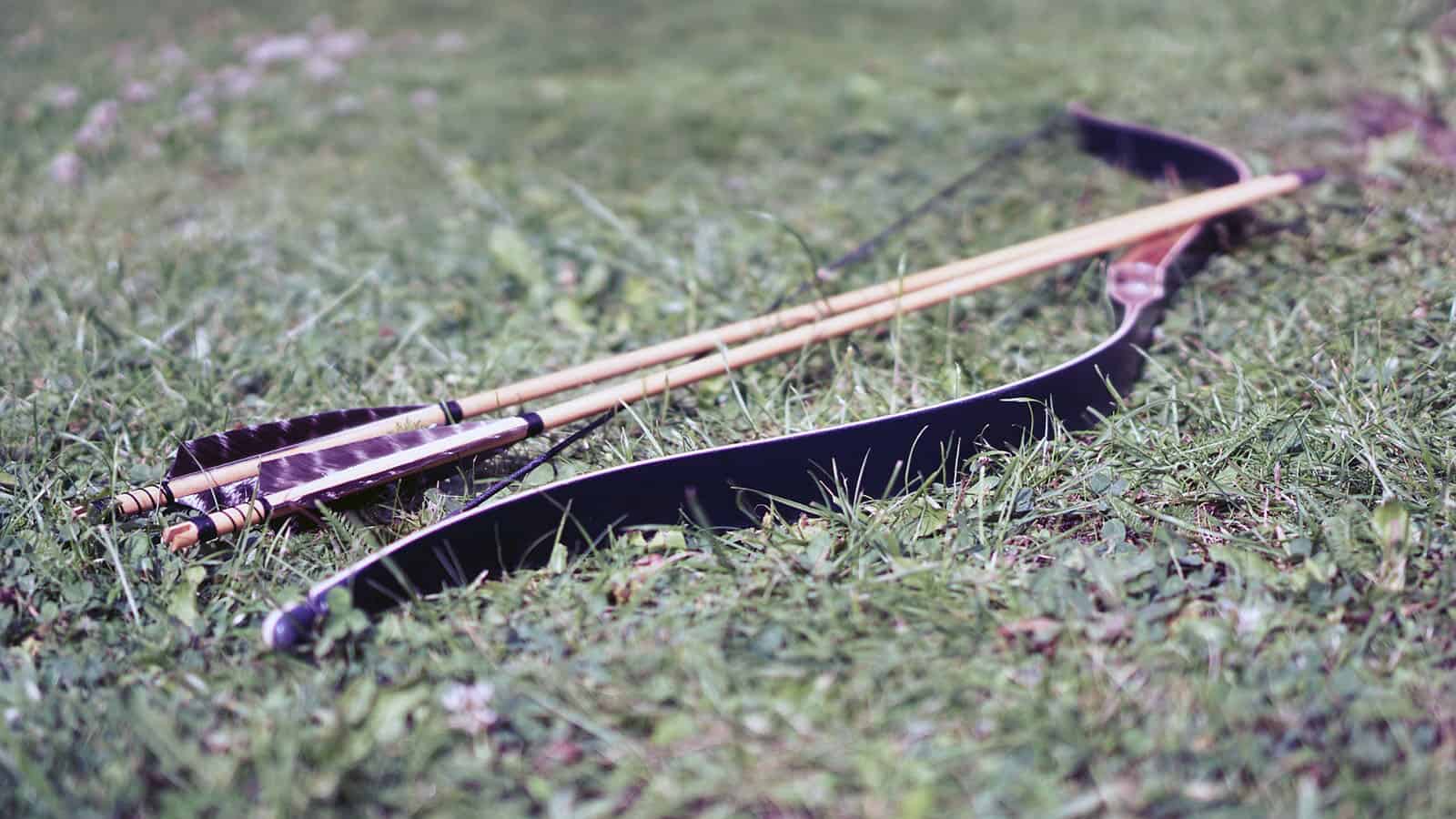
Aluminum
Aluminum arrows are famous among archers due to their durability and lightweight nature. They are made from a high-strength aluminum alloy and offer consistent and reliable performance.
These arrows are sometimes called target arrows because they provide a stable and accurate flight.
Additionally, they are more resistant to damage than wood arrows, making them an excellent outdoor and field archery option. However, aluminum arrows are typically more expensive than wood arrows, and their stiffness may cause them to bend or deform if not appropriately handled.
Overall, aluminum arrows offer a good balance of affordability, durability, and performance, making them an excellent choice for many archers.
Check out the Best Aluminum Arrows.
In conclusion, aluminum arrows are lightweight, durable, consistent, and have a reliable performance. They also have resistant to damage. However, they are typically more expensive than wood arrows and are stiff, which may affect the accuracy.
Carbon
Carbon arrows are made from a combination of carbon fibers and resin. They are known for their lightweight and durable nature. Because of this, it’s the best arrow for a compound bow.
The combination of materials used to make carbon arrows allows for a consistent spine, which is essential for achieving the best results. This same material is also used to make the best crossbow bolts.
In addition, carbon arrows are more resistant to damage than wood or aluminum arrows, making them ideal for outdoor use. However, carbon arrows can be more expensive than other types of arrows, and the quality can vary between brands and manufacturers.
In conclusion, carbon arrows are lightweight and durable, have stable and accurate flight, have a consistent spine for better results, and resist damage. However, carbon arrows are typically more expensive than wood or aluminum arrows.
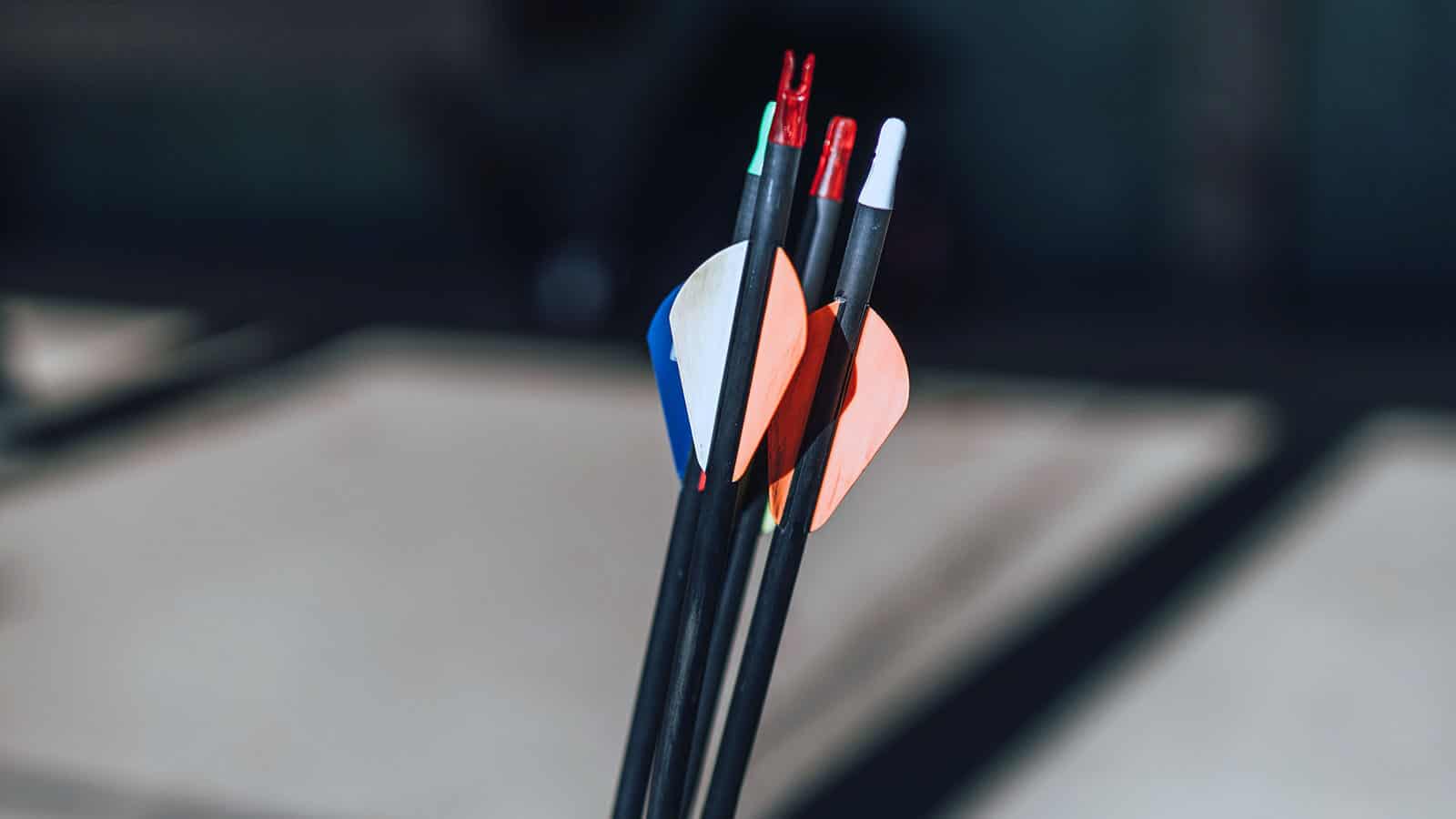
Composite
Composite arrows are made from carbon, aluminum, and other fibers. They offer the benefits of both carbon and aluminum arrows. They are known for their strength and durability, making them one of the best hunting arrows.
They are also more resistant to damage than wood arrows but less prone to bending or deformities than aluminum arrows.
The quality of composite arrows can vary depending on the materials used and the manufacturer, so purchasing them from a reputable supplier is essential.
In conclusion, composite arrows are solid and durable, have consistent and reliable performance, stable and accurate flight, and resist damage. However, composite arrows are typically more expensive than wood arrows.
Fiberglass
Fiberglass arrows are affordable and available in a wide range of draw lengths. These will be your best option if you’re searching for inexpensive arrows to start shooting with today.
If you’ve ever practiced archery in high school or at a summer camp, fiberglass arrows were almost certainly what you used.
When stressed, they are known to split, which might result in an injury. Therefore, if you use them, dispose of them once they begin to wear out.
Check out the Best Fiberglass Arrows Now.
In conclusion, fiberglass arrows are affordable, but they wear out quickly and might be dangerous.
Best Arrows For Recurve Target Shooting
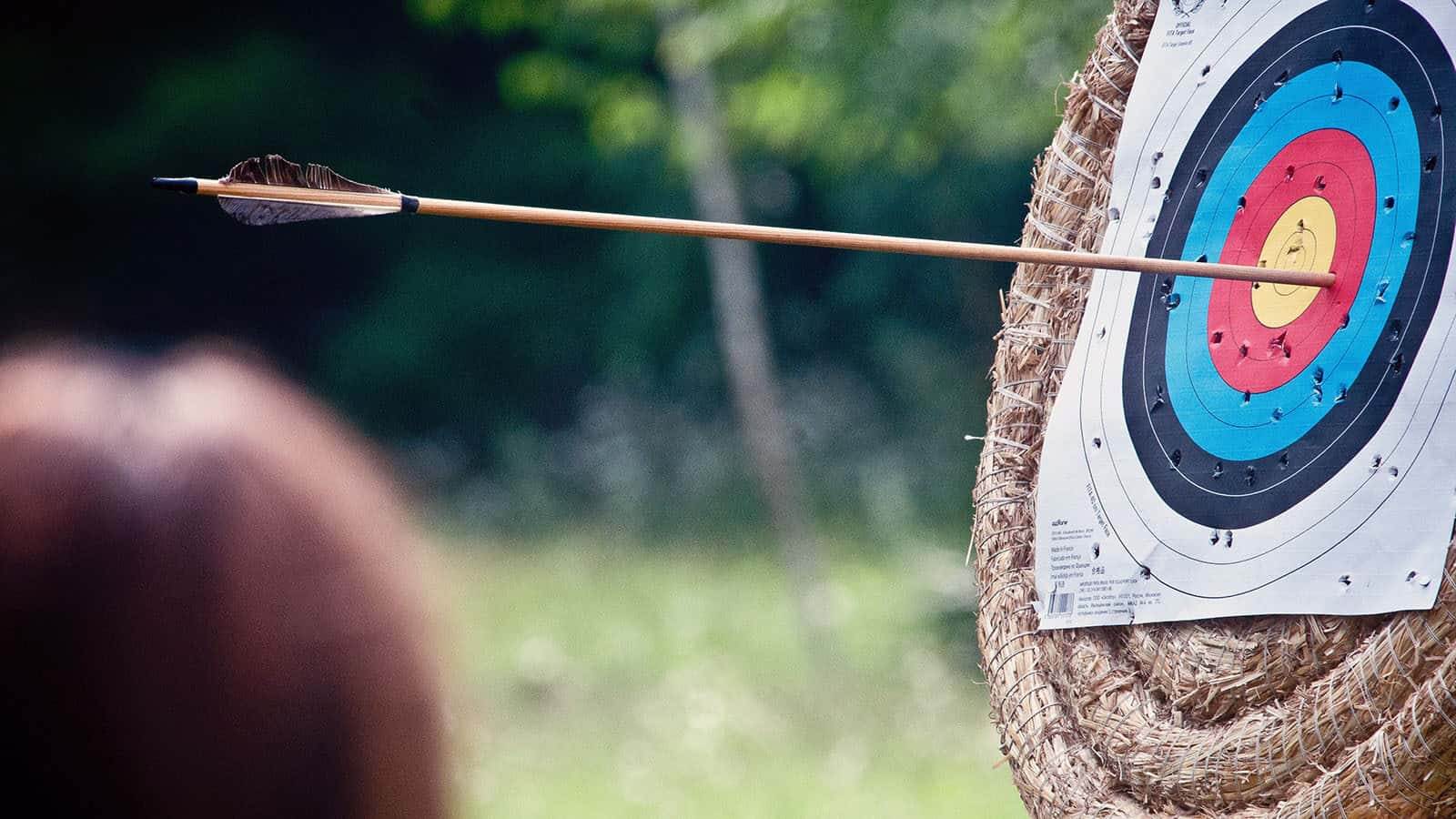
The answer is carbon arrows if you’ve ever wondered what arrows to use with recurve bow.
You can also consider other options like aluminum and hybrid arrows. Still, carbon arrows are considered the standard for recurve archery due to their performance and reliability.
When choosing arrows for recurve shooting, it’s essential to consider several factors, such as draw weight, bow type, and personal preference.
Unlike aluminum or wood arrows, carbon arrows maintain their stiffness even after repeated use, providing a more consistent shot every time.
Additionally, carbon arrows are relatively lightweight, which helps reduce hand fatigue during extended shooting sessions.
What Are The Best Arrows For A Longbow?
Wooden arrows are the best arrows for a longbow. They are light, flexible, and have a traditional look that many archers prefer. However, you can use modern materials such as carbon and aluminum for improved speed and accuracy.
How To Read Arrow Measurements
Below are how arrows are measured.
Arrow Length
The usual way to measure an arrow is by counting the number of inches it takes from the point where the string rests on the nock to the end. However, the tip is not included in this measurement.
Manufacturers may measure from tip to tip or the arrow’s shaft when providing you with this information.
Ultimately, the best approach how to determine arrow length is to take your measurements.
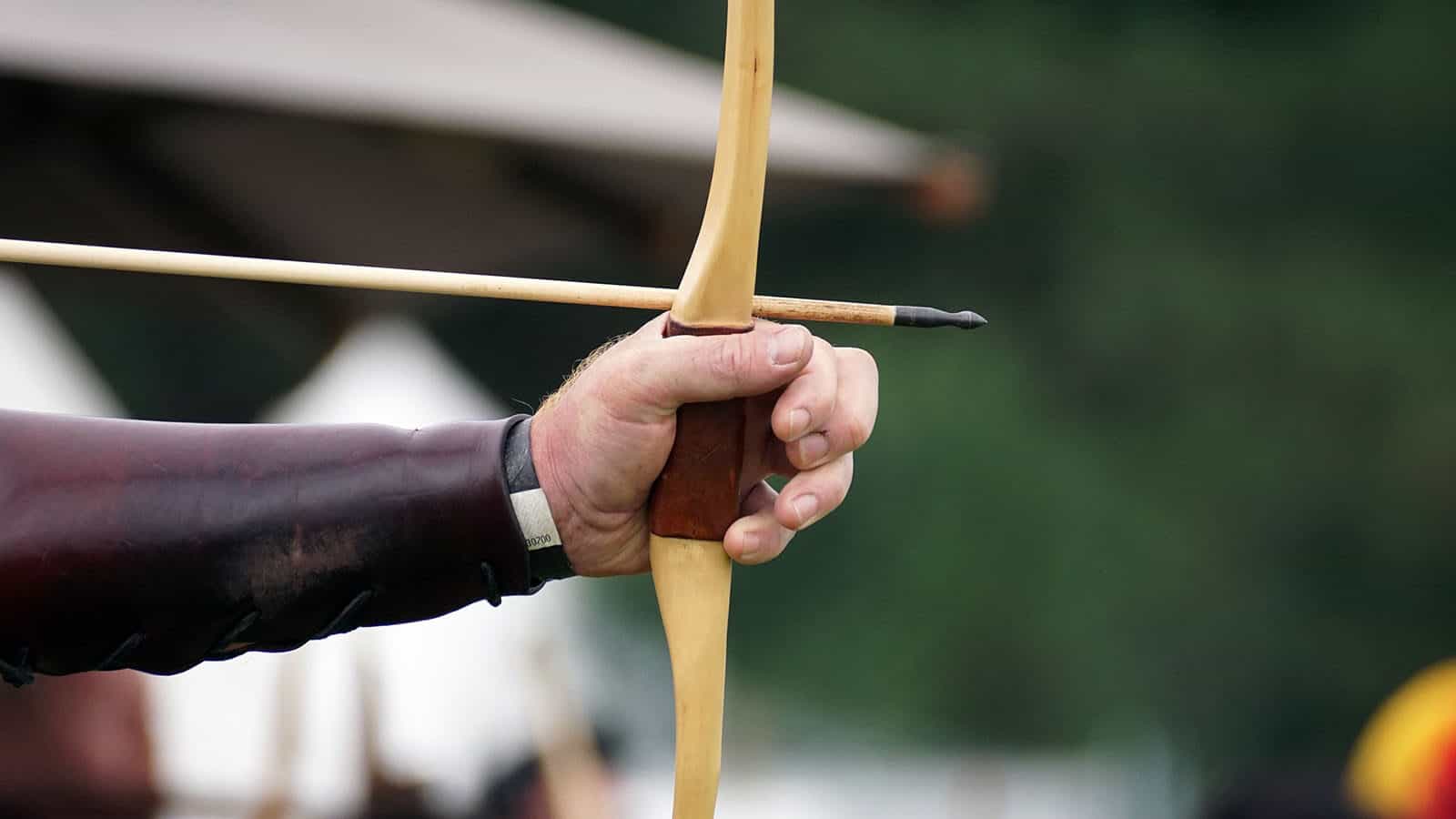
Aluminum Arrows
On aluminum arrows, the outer diameter and shaft thickness are marked. And they usually have a four-digit number.
The first two numerals are expressed in 64ths of an inch, indicating the diameter. That is, 20 shows 20/64 of an inch.
The second and third numbers represent the thickness in 1000ths of an inch. If the second and third numbers are 25, the shaft’s thickness is 25/1000 inches.
Carbon Arrows
Manufacturers gauge the spine deflection or how much the arrow bends. The lower the number, the more rigid the spine.
However, most ratings fall between 260 and 500.
Reading and understanding arrow measurements is essential for archers and bowhunters, as it helps to ensure that they select the right arrow for the right bow and shooting conditions.
Conclusion
Choosing the right arrow for your bow and shooting style can significantly improve your performance and enjoyment of the sport.
So, we hope in this piece, you understood the various types of arrows, the arrow anatomy, and what to consider when buying one.
Enjoyed this one? Check out the bow anatomy here.
